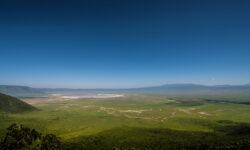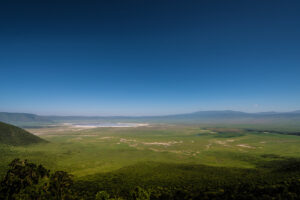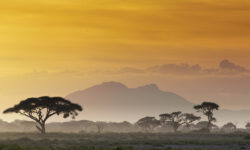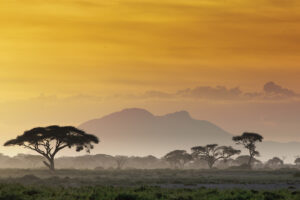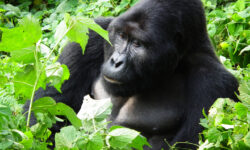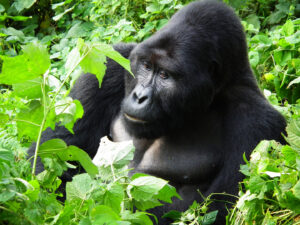The Great Wildebeest Migration: An Epic Journey Through East Africa
Each year, from July to October, a spectacular natural event unfolds in East Africa, known as the Great Wildebeest Migration. Over two million wildebeest, along with numerous other herbivores, embark on a monumental journey from the expansive plains of Tanzania’s Serengeti National Park to the lush grasslands of the Maasai Mara National Reserve in Kenya. This migration is unparalleled on the planet for its sheer scale and drama, rightfully earning its place as one of the “Seven New Wonders of the World” and compared to the World Cup of Wildlife.
“The migration is a relentless quest for survival and sustenance.”
The herds traverse vast landscapes, facing formidable challenges including predatory threats from lions, cheetahs, and hyenas, and navigating treacherous river crossings infested with crocodiles. This journey is also a time for renewal—birthing, mating, and courting occur dynamically as the wildebeest move across international borders.
Planning to witness this natural wonder requires understanding that the migration is a dynamic, continuous cycle influenced heavily by annual rainfall patterns. The wildebeest are driven by an ancient instinct to follow the rains, grazing on the new growth in a predictable pattern through the Serengeti and Maasai Mara ecosystems.
A Monthly Guide to the Wildebeest Migration:
January to March
The year begins with the wildebeest herds congregating in the southern Serengeti, particularly around the Ngorongoro Conservation Area, where the fertile plains support the calving season. This period offers a unique spectacle of newborn wildebeests taking their first steps, even as predators lurk close by, hoping to prey on the vulnerable calves.
April to May
As the dry season approaches, the migration intensifies. The wildebeest begin their long trek northward in dramatic fashion, forming columns that can stretch for up to 40 kilometers as they move through the central and western regions of the Serengeti.
June to July
These months mark a climactic phase in the migration calendar—the crossing of the Grumeti River. Spectators hold their breath as herds plunge into crocodile-infested waters in a desperate bid to reach the other side. This period is fraught with tension and drama, providing some of the most iconic images associated with the migration.
August to September
Survivors of the river crossings continue their journey into the northern Serengeti. The herds disperse into smaller groups, increasing their chances of finding fresh pasture as they edge closer to the Maasai Mara. This phase is equally perilous, as the wildebeest are now within range of Kenya’s skilled predators.
October to November
Triggered by the onset of the short rains, the vast herds begin their southward trek back to the Serengeti, following the fresh trails of rain clouds that promise abundant grass. This marks the preparation for another cycle of life and migration, which will restart with the next calving season.
December
December serves as a transitional period, setting the stage for the dramatic and life-affirming events of the calving season, where the cycle of life for the wildebeest begins anew. The herds of wildebeest are typically on the move back to the southern Serengeti from the Maasai Mara, completing their annual migratory cycle. This period is characterized by the onset of the short rains, which rejuvenate the grasslands of the southern Serengeti, providing a fresh and abundant food source for the wildebeest.
During this time, the herds gradually gather in the southeastern part of the Serengeti, particularly around the Ndutu area, which is part of the Ngorongoro Conservation Area. This region’s nutrient-rich soils and fresh sprouting grasses are ideal for supporting the needs of the wildebeest, especially in preparation for the calving season that starts in late January and extends through March.
The return to the southern Serengeti is crucial for the survival of the calves born in the upcoming calving season, as the conditions here maximize their chances of survival. Predators continue to follow the herds, hoping advantage of the young and weak, but the dense concentration of wildebeest also means increased vigilance and protection in numbers.
The Great Wildebeest Migration is not just a movement; it is a powerful expression of life’s resilience and the intricate balance of nature’s ecosystems. Witnessing this event offers a profound insight into the struggles and triumphs of wildlife, and can surface a variety of emotions in one of the most breathtaking landscapes on Earth. These forward focused herbivores have a spectacular journey of unscripted stories as they breathlessly chase the rain.
You can experience this incredible wildlife event on a number of our East African tours and experiences. See more below…
Unearth the aromatic allure of Zanzibar's spice island, delve into the historic mysteries of Stone Town, and bask in northern tropical beaches. Venture across the Serengeti National Park, witnessing vast herds grace the expansive plains in an awe-inspiring spectacle of nature.
-
Tour Duration
10 Days -
Price From
CampingR41,950 NDNAccommodatedR46,950 NADN
Embark on an epic safari journey, navigating through Kenya and Tanzania's most famed National Parks. The abundant wildlife you encounter along this route promises to astound and leave you with lasting impressions of Africa's natural splendor.
-
Tour Duration
14 Days -
Price From
AccommodatedR74,000 NANN
Bask in the captivating views of the Great Rift Valley, roam the expansive plains of the Masai Mara National Park, and engage in intimate encounters with the endangered mountain gorillas for an immersive African experience.
-
Tour Duration
15 Days -
Price From
CampingR53,950 NMGAccommodatedR60,150 NAMG

